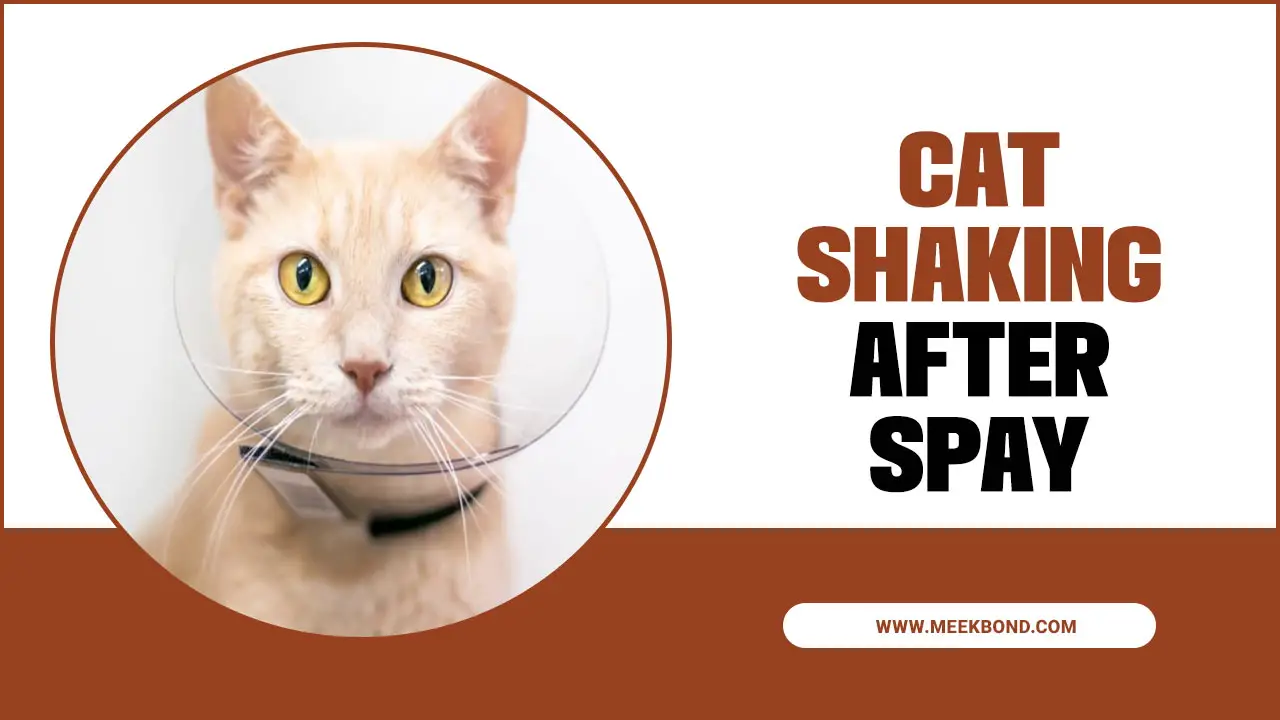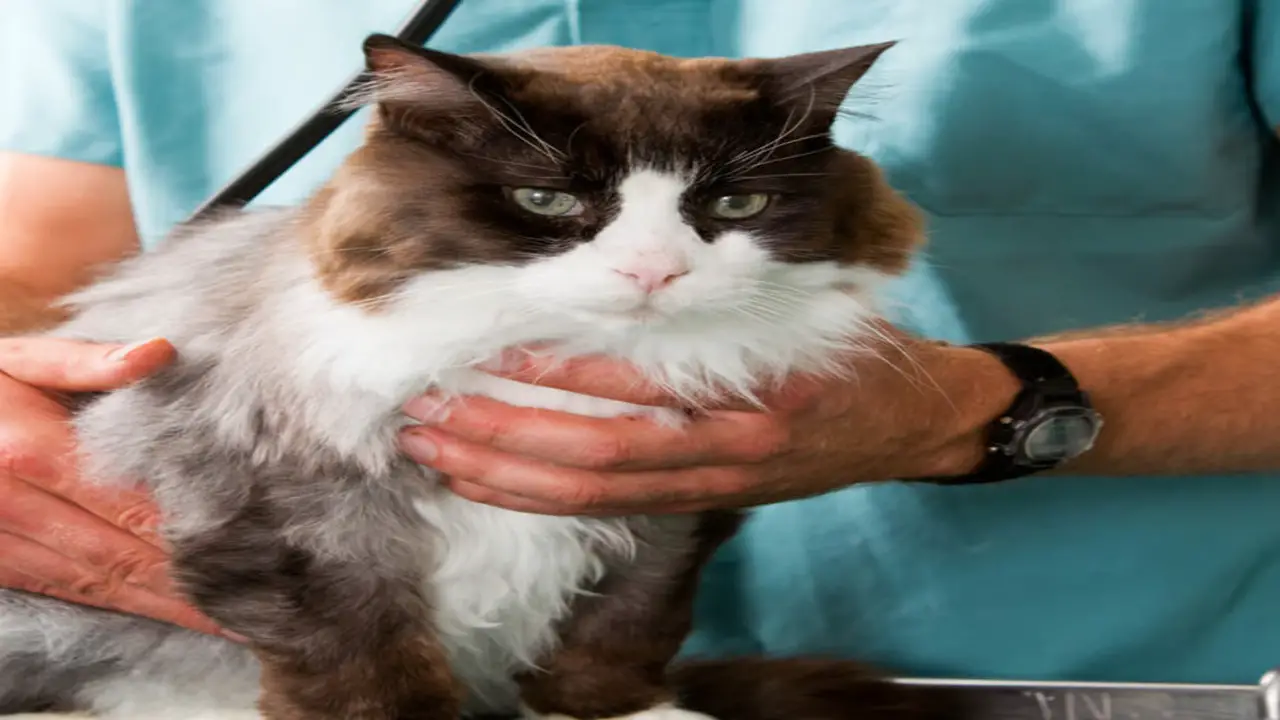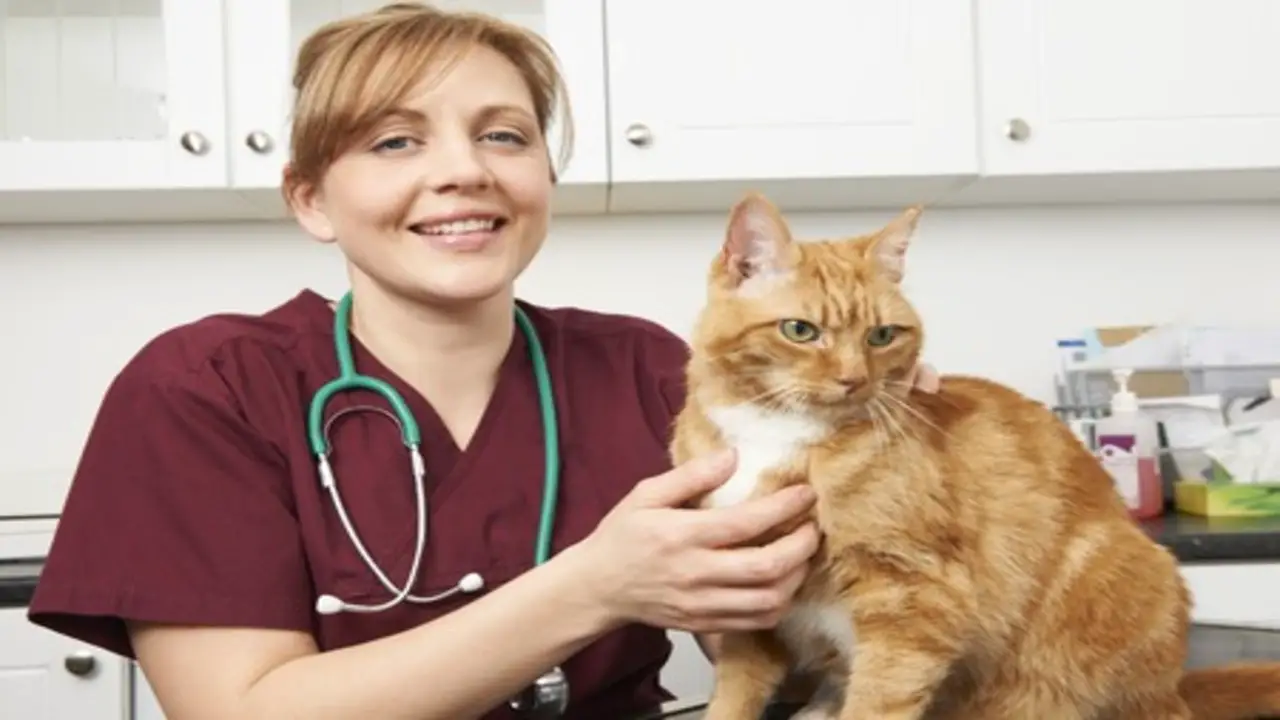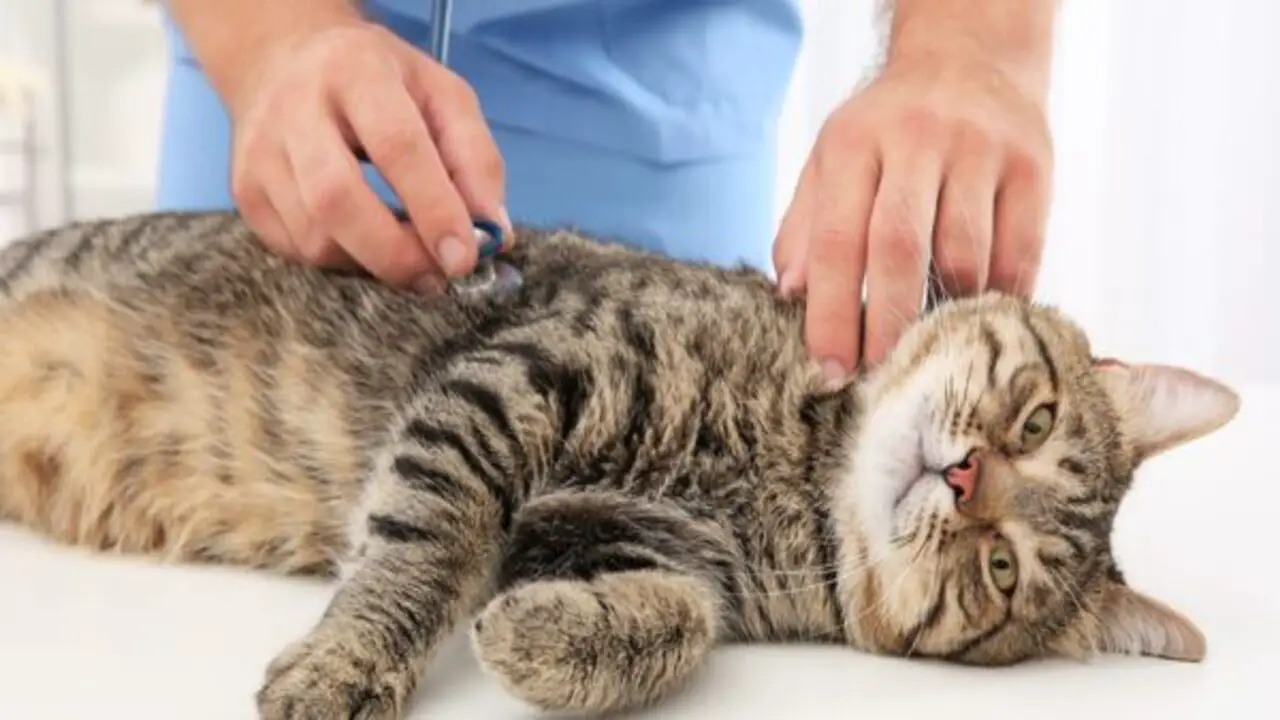Spaying is a crucial surgical procedure that involves the removal of a female cat’s ovaries and uterus. The surgery is usually performed under general anesthesia, and it helps prevent cats from going into heat.
Spaying also eliminates the risk of pregnancy, making it an essential aspect of responsible pet ownership. Here we’ll discuss everything you need to know about cat shaking after spay, including the importance of the procedure and its impact on your feline friend.
We’ll also delve into the five most common reasons cats shake or tremble after spaying. However, we’ll discuss when to contact a veterinarian if you’re worried about your cat’s health. So, let’s dive in and explore this important topic together.

Importance Of Spaying In Cats
Spaying on cats is crucial for several reasons. Firstly, it helps control the population and prevents unwanted litter, reducing the number of stray and abandoned cats. Moreover, spaying reduces the risk of certain diseases like uterine infections and mammary tumors. By removing the reproductive organs, spayed cats are less likely to exhibit behaviors like yowling and spraying associated with mating.
Additionally, spaying eliminates the risk of pyometra, a potentially life-threatening uterus infection. This procedure can contribute to a longer and healthier life for female cats. It is vital to consider the benefits of spaying your kitten or kitty, as it ensures their well-being and prevents future complications. Using anaesthetic and pain meds during the surgery provides a comfortable experience for the cat, and proper aftercare, including using bandages if necessary, is essential.
Why Is My Cat Shaking After Spay – The 5 Reasons

It is not uncommon for cats to shake or tremble after being spayed. This can result from the anaesthesia wearing off and the body’s natural response to the surgery. Shaking or trembling can also be a sign of pain or discomfort. It is important to monitor your cat closely after the procedure and contact your veterinarian if you have any concerns.
They will be able to guide how best to care for your cat during the recovery process and alleviate any discomfort they may be experiencing. Remember, each cat is unique and may respond differently to spaying, so it is always best to consult a professional for personalized advice. Here are 5 Reasons cat shaking after spay.
Post-Surgery Pain
After spaying, it is not uncommon for some cats to experience pain. The veterinarian may prescribe pain medication, often as anaesthetic or pain meds, to manage discomfort. Cats might exhibit signs of pain, such as restlessness, decreased appetite, or reluctance to move. It is crucial to adhere to the veterinarian’s instructions for pain management.
If the pain persists or worsens, it is always recommended to consult the vet for further evaluation. The health and well-being of your kitten or kitty after surgery should be a top priority. Following the appropriate pain management protocols will help ensure a smooth recovery. Remember to watch your cat and seek professional advice if you have any concerns about post-surgery pain.
Anesthesia Side Effects

As cats undergo surgery and anaesthesia, they must know the potential side effects. One common side effect is shaking or trembling, a normal reaction as the anaesthesia wears off. Cats may also experience other side effects, such as nausea, vomiting, or drowsiness.
These side effects typically resolve within a few hours to a day after the surgery. However, if the shaking persists or worsens, it is advisable to consult a veterinarian for guidance. Additionally, it is worth noting that kittens, like adult cats, may experience these side effects. It is essential to monitor your kitty closely during this time and provide any necessary care, such as keeping them comfortable and ensuring their bandages are secure.
Shock
Shaking after a cat has been spayed can sometimes be a sign of shock. During and after the surgery, the veterinarian will carefully monitor the cat for any signs of shock. This can occur due to factors such as anaesthesia or other related causes. If the shaking persists or worsens, it is crucial to seek immediate medical advice.
In some cases, the vet may administer additional pain medication to help alleviate any discomfort the cat may be experiencing. It’s important to remember that shaking is not always a cause for alarm, as the anaesthesia wearing off can also lead to temporary shaking or trembling. However, if it continues or becomes severe, it’s best to consult a veterinarian for further evaluation and guidance.
Stress-Induced Shaking
Shaking after spaying can be a normal reaction to the stress of the surgery. Some cats may experience trembling or shaking due to anxiety. It’s important to remember that the cat’s body adjusts to the anaesthesia and the incision.
Providing a calm and quiet environment for the cat to recover can help alleviate any added stress. During this time, monitoring for any vomiting, diarrhoea, or other signs of distress is essential. Watch for abnormal behaviour or reactions; cats may respond differently to the surgical procedure. If you notice anything concerning or if the shaking persists or worsens, it’s always best to consult a veterinarian for guidance.
Hypothermia
Shaking after spaying in cats could indicate hypothermia, as anaesthesia can lower their body temperature. To counter this, vets typically provide warming measures like blankets or heat lamps to regulate body heat. It’s important to monitor the cat’s body temperature and create a warm environment for its recovery.
In addition, offering small amounts of warm broth can help stimulate their appetite and provide nourishment. Hypothermia can occur after spaying due to the effects of anaesthesia, but with proper care and attention, the cat can recover comfortably. Watch for unusual or persistent shaking and consult a vet if necessary. This will ensure the cat’s swift and healthy recovery.
The Impact Of Spaying On Cats

Spaying is a common surgical procedure for female cats, recommended by veterinarians as a responsible choice for pet owners. This procedure helps prevent unwanted pregnancies and reduces the risk of certain health issues. It involves removing the ovaries and uterus, which has positive long-term effects on a cat’s health and behaviour. After spaying, cats may experience some shaking, which can be a normal reaction to the stress of surgery.
Some cats may also tremble or shake due to anxiety. Additionally, the cat’s body may adjust to the anaesthesia and incision. Providing a calm and quiet environment for the cat’s recovery is important. Monitoring for any signs of distress, such as vomiting or diarrhoea, is crucial.
Hypothermia can also cause shaking after spaying, as anaesthesia can lower the body temperature. Veterinarians will provide measures to keep the cat warm, such as blankets or heat lamps. Monitoring the cat’s body temperature and offering warm broth for nourishment can help their recovery.
Physical Changes After Spaying
After spaying, cats may experience some temporary discomfort, which is completely normal. The incision site may appear red or swollen, but this should subside as the healing progresses. It’s also common for cats to have a decreased appetite and experience mild lethargy post-surgery.
The veterinarian may provide pain medication such as anaesthetic or pain meds to manage post-operative pain. Monitoring the incision site for any signs of infection or excessive redness is crucial. Additionally, it’s essential to watch for any bandages that need to be changed or adjusted. Remember, these physical changes are part of the normal healing process, but if you have any concerns, don’t hesitate to consult your vet.
Behavioural Changes After Spaying
Spaying female cats can have significant behavioural benefits. One of the most notable changes is decreased anxiety and an overall increase in relaxation. Cats are also less likely to engage in territorial marking behaviours, which can be a source of frustration for many pet owners. Additionally, spayed cats often experience a decreased desire to roam or escape, as they no longer have the biological urge to mate.
Overall, spaying contributes to a calmer and happier cat. These behavioural changes result from removing the reproductive organs during the spaying procedure. By eliminating the hormonal fluctuations during heat cycles, spaying helps establish a more stable and contented temperament in cats.
How Best To Care For Your Cat During The Recovery Process

Caring for your cat during the recovery process after spaying is important to ensure their comfort and well-being. After the procedure, your cat may experience mild shaking or shivering, a normal reaction to the anesthesia wearing off.
To help your cat during this time, ensure they have a warm and quiet space to rest in. Provide them with soft bedding and keep the room temperature at a comfortable level. Limiting their physical activity and preventing them from jumping or climbing onto furniture is also important.
Monitor their incision site for any signs of infection or excessive swelling, and contact your veterinarian if you have any concerns. Additionally, follow any post-operative care instructions provided by your vet, such as administering medications or limiting their diet. You can help your cat recover smoothly after their spay surgery by providing proper care and attention.
Cat Shaking Post-Spay: Is It Normal?
Post-spaying, it is common for cats to experience shaking or trembling as the anaesthesia gradually wears off. This reaction is not necessarily a cause for concern and should dissipate within a few hours or a day after surgery.
However, if the shaking persists or there are other worrying symptoms, it is important to seek the advice of a veterinarian. Keep an eye out for signs of discomfort, such as vomiting or diarrhoea, as these may require additional pain medication. It’s also worth noting that some cats may experience lethargy or loss of appetite following spaying, which are normal reactions to surgery but should also be monitored closely.
When Should You Contact A Vet?

If your cat is experiencing severe pain, discomfort, or excessive shaking following spaying, it is essential to seek veterinary assistance immediately. A professional should also evaluate any redness, swelling, or discharge at the incision site.
It is equally important to report any changes in your cat’s behaviour, appetite, or appearance to the veterinarian for proper medical advice and care. After spaying, your cat may experience discomfort and require medication and rest to recover fully. Ensure you follow your vet’s post-operative care instructions carefully to ensure a smooth recovery process for your furry friend.
Conclusion
It is normal for cats to experience shaking after being spayed for various reasons, such as post-surgery pain, anaesthesia side effects, shock, stress-induced shaking, and hypothermia. However, it is important to monitor your cat’s condition and contact a vet if the shaking persists or is accompanied by other concerning symptoms.
Spaying has several benefits for cats, including preventing unwanted pregnancies, reducing the risk of certain diseases, and eliminating certain behavioural issues. If you have any concerns or questions about your cat’s post-spay shaking or the spaying process in general, it is always best to consult with a veterinarian who can provide expert guidance and advice. We hope you now understand cat shaking after spay.
Frequently Asked Questions
Why Is My Cat Trembling?
It is not uncommon for cats to experience trembling after surgery, including spaying. This could be due to anaesthesia or pain medication. If the trembling persists or worsens, you must contact your veterinarian for further evaluation and treatment.
What Are The Normal Side Effects Of Cat Spay?
It is common for cats to experience some side effects after being spayed, including lethargy, loss of appetite, and sensitivity around the surgical site. Shaking or tremors may also occur due to anaesthesia or pain medication. If your cat’s symptoms persist or worsen, contact your veterinarian.
Is It Normal For My Pet To Be Shivering Or Shaking A Lot?
It is common for pets to experience shivering or shaking after spay surgery as the anaesthesia wears off. However, if the shaking persists for more than a day or is severe, it’s best to consult a veterinarian. Excessive shaking may indicate pain, anxiety, hypothermia, or illness. Keep your pet warm and calm, and seek medical attention if necessary.
What Are Our Experiences With Our Cats After Surgery?
It is common for cats to experience shaking or trembling after surgery as the anaesthesia wears off. Monitor your cat’s behaviour, ensure their comfort, and provide access to food and water. If any concerning symptoms or behaviours arise, consult a veterinarian immediately.
What Is Ur Advice For Me To Help My Cat Towards Recovery?
Follow your vet’s instructions carefully to help your cat recover after spaying. Keep your cat comfortable and restrict their activity for a few days. Watch out for signs of infection or complications like excessive shaking or bleeding. Provide plenty of water and nutritious food to aid in their recovery.

Aquarium passion is all about connecting with the aquatic life and providing education to the public on the importance of these creatures. We showcase a wide variety of marine life through our exhibits as well as working with schools to provide unique learning opportunities for students of all ages.









